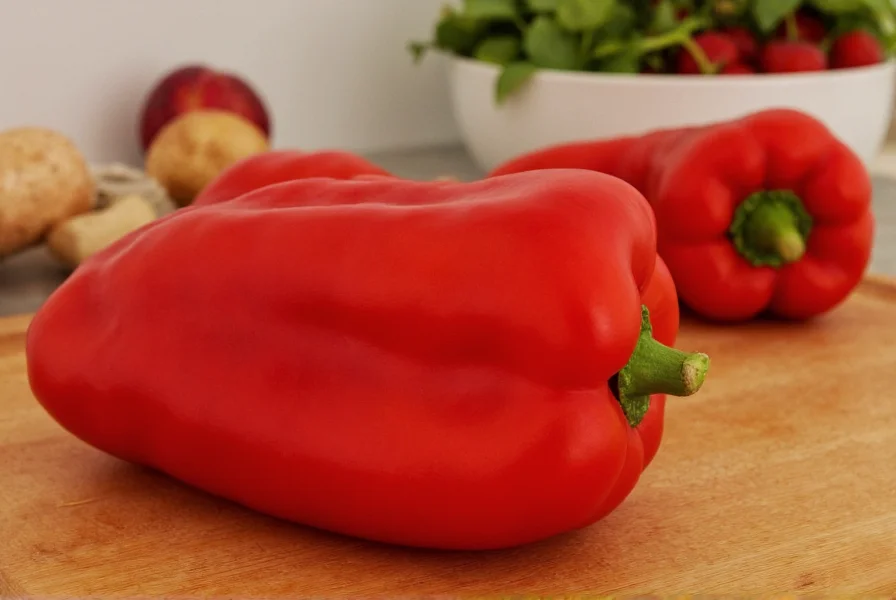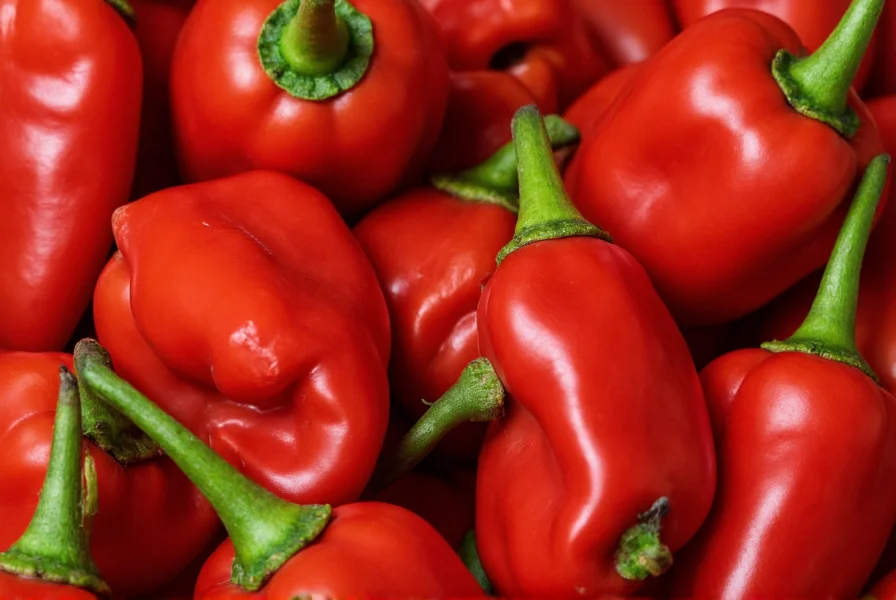When exploring the world of chili peppers, understanding their heat levels is crucial for both culinary applications and personal preference. The Apollo pepper, while not as widely recognized as some mainstream varieties, offers a unique balance of heat and flavor that deserves attention from pepper enthusiasts and home cooks alike.
Understanding the Apollo Pepper
The Apollo pepper is a hybrid chili variety developed for its consistent heat level and robust flavor profile. Unlike many specialty peppers that prioritize extreme heat, the Apollo was bred to deliver reliable medium heat with excellent culinary versatility. This pepper typically grows to 2-3 inches in length, starting green and maturing to a vibrant red color.
Scoville Scale Context
The Scoville scale measures the pungency or 'heat' of chili peppers and other spicy foods. Developed by pharmacist Wilbur Scoville in 1912, this scale quantifies the concentration of capsaicinoids—the compounds responsible for the burning sensation we perceive as 'heat.'
Modern testing methods have largely replaced the original subjective human taste test with high-performance liquid chromatography (HPLC), which provides more precise measurements. These results are then converted to Scoville Heat Units (SHU) for consistency with historical data.
| Pepper Variety | Scoville Heat Units | Heat Level |
|---|---|---|
| Apollo Pepper | 5,000-7,000 SHU | Medium |
| Jalapeño | 2,500-8,000 SHU | Medium |
| Serrano | 10,000-23,000 SHU | Medium-Hot |
| Habanero | 100,000-350,000 SHU | Very Hot |
What Makes Apollo Peppers Unique
While sharing a similar heat range with jalapeños, Apollo peppers distinguish themselves through several characteristics:
- Consistent heat level - Unlike jalapeños which can vary significantly in heat, Apollo peppers maintain a more predictable 5,000-7,000 SHU range
- Flavor profile - They offer a cleaner, fruitier taste with less bitterness than some comparable medium-heat peppers
- Thicker walls - Making them excellent for stuffing and roasting applications
- Higher yield - They typically produce more fruit per plant than standard jalapeño varieties

Factors Affecting Apollo Pepper Heat
Several variables can influence the actual heat level of Apollo peppers:
- Soil conditions - Peppers grown in nutrient-rich soil with proper drainage tend to develop more consistent heat levels
- Water stress - Mild water stress can increase capsaicin production, potentially making peppers hotter
- Ripeness - Fully mature red Apollo peppers typically register higher on the Scoville scale than their green counterparts
- Climate - Warmer temperatures generally produce hotter peppers within the variety's genetic range
Culinary Applications of Apollo Peppers
With their medium heat level and distinctive flavor, Apollo peppers work well in numerous culinary contexts:
- Fresh applications - Perfect for salsas, guacamole, and fresh relishes where you want noticeable heat without overwhelming spiciness
- Roasting and grilling - Their thick walls make them ideal for charring, which enhances their natural sweetness
- Stuffed peppers - An excellent alternative to bell peppers when you want subtle heat in stuffed pepper recipes
- Pickling - Maintains texture well when pickled, adding pleasant heat to antipasto platters
- Sauces and hot sauces - Provides balanced heat as a base for medium-heat hot sauces
Growing Apollo Peppers
For home gardeners interested in cultivating Apollo peppers, these guidelines will help achieve optimal results:
- Start seeds indoors 8-10 weeks before last frost date
- Transplant outdoors when soil temperature reaches at least 65°F (18°C)
- Provide full sun (6-8 hours daily) for best fruit production
- Maintain consistent moisture without waterlogging the soil
- Harvest when peppers reach full size and begin changing color
Unlike some specialty peppers that require precise growing conditions, Apollo peppers demonstrate good adaptability across various climates, making them accessible to most home gardeners seeking a reliable medium-heat chili.

Comparing Apollo Peppers to Similar Varieties
Understanding how Apollo peppers compare to other medium-heat varieties helps contextualize their Scoville rating:
- vs. Jalapeño - While jalapeños range from 2,500-8,000 SHU with significant variability, Apollo peppers maintain a more consistent 5,000-7,000 SHU with cleaner flavor
- vs. Fresno - Fresnos (2,500-10,000 SHU) have similar heat but Apollo peppers offer thicker walls and more reliable heat levels
- vs. Anaheim - Anaheims (500-2,500 SHU) are significantly milder, making Apollo peppers 2-3 times hotter
- vs. Cubanelle - Cubanelles (100-1,000 SHU) are much milder, placing Apollo peppers in a distinctly hotter category
This consistent medium heat makes Apollo peppers particularly valuable for commercial food producers who need predictable spice levels in their products.
Common Questions About Apollo Pepper Heat
How does the Apollo pepper heat compare to a jalapeño?
Apollo peppers typically range from 5,000-7,000 Scoville units, which places them at the higher end of the jalapeño's range (2,500-8,000 SHU). While some jalapeños can be milder or occasionally hotter, Apollo peppers provide more consistent medium heat with less variability than standard jalapeños.
Are Apollo peppers good for beginners trying spicy foods?
Yes, Apollo peppers are an excellent choice for those new to spicy foods. Their medium heat level (5,000-7,000 SHU) provides noticeable spice without being overwhelming. They're significantly milder than habaneros or ghost peppers but offer more heat than bell peppers or poblanos, making them a perfect stepping stone for developing a tolerance to spicier foods.
Does the heat of Apollo peppers change as they ripen?
Yes, like most chili peppers, Apollo peppers increase in heat as they mature. Green Apollo peppers typically measure around 5,000 SHU, while fully ripened red Apollo peppers can reach up to 7,000 SHU. The ripening process also develops more complex flavors, with red peppers exhibiting sweeter, fruitier notes alongside the increased heat.
Can I substitute Apollo peppers for jalapeños in recipes?
Absolutely. Apollo peppers make an excellent substitute for jalapeños in most recipes. Their similar heat range (5,000-7,000 SHU vs. jalapeños' 2,500-8,000 SHU) means they provide comparable spice levels, but with more consistent heat. The thicker walls of Apollo peppers also make them better suited for stuffing applications. When substituting, use the same quantity as you would jalapeños, but taste as you go since individual heat preferences vary.
Why choose Apollo peppers over other medium-heat varieties?
Apollo peppers offer several advantages over other medium-heat varieties: consistent heat level (5,000-7,000 SHU), thicker walls for better texture in cooking, cleaner flavor profile with less bitterness, and higher yield for gardeners. Their predictability makes them particularly valuable for commercial food production where consistent spice levels are essential. Home cooks appreciate their versatility across fresh, roasted, and pickled applications without overwhelming heat.











 浙公网安备
33010002000092号
浙公网安备
33010002000092号 浙B2-20120091-4
浙B2-20120091-4